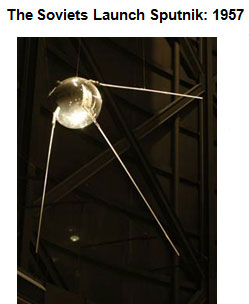
The Cold War era provided several turning points in the history of the United States. During World War II, the United States and the Soviet Union were allies, but their relationship was tenuous. The United States was suspicious of Stalin and his communist government, while the Soviets resented the fact that the United States did not assist the Soviets in a timely manner when requested during World War II. The Soviets blamed the deaths of millions of Russians on the United States’ delay.
Tensions increased between these two superpowers, and the two countries grew to distrust each other. The Soviets pressed forward with their plan to take over the world, and the United States pressed forward with plans of containment, keeping communism in its place.
The relationship turned into a bitter standoff, called the Cold War, which lasted from 1947 to 1991. This era was characterized by a series of events that would bring the world to the brink of war and potentially lead to the destruction of the world. Although the United States and the Soviet Union never fought each other directly, their political and ideological influences were the source of many conflicts during this period, many of which became turning points for the United States.

On October 4, 1957, the Soviet Union launched the world’s first satellite into orbit, moving the Cold War into space. Sputnik’s launch surprised everyone, especially Americans who were caught off guard by the progress that the Soviets had made in science and space.
The United States saw the Soviet capability of space exploration as a sign of military as well as technological power. Sputnik represented the possibility that the Soviet Union was superior to the United States in this realm.
In response to the Soviet space exploration accomplishments (and possibly out of fear), the United States launched Explorer I, an American satellite, into orbit in 1958. U.S. President Dwight Eisenhower approved the creation of the National Aeronautics and Space Administration (NASA). This agency was dedicated to space exploration.
The Space Race was officially underway between the United States and the Soviet Union. Competition between the two superpowers intensified as the Space Race grew to include the race for both nations to secure nuclear weapons. The nuclear arms race was the source of a constant state of brinkmanship and the fear of a nuclear war that would destroy the world.
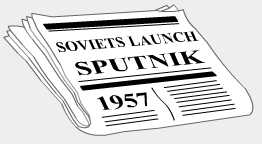
Turning Point: The Soviet Union launched Sputnik in 1957, initiating the space race with the United States.
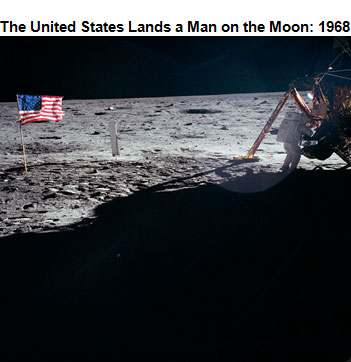
As the Space Race continued between the United States and the Soviet Union, the Soviets seemed to be a step ahead of the Americans in space exploration. In April 1961, the Soviets launched the first man into space. Not to be outdone, NASA worked fervently to advance its space technology. In May 1961, the United States launched the first American, Alan Shephard, into space. To bolster its abilities in the Space Race, President John F. Kennedy claimed that the United States would put a man on the moon by the end of the decade.
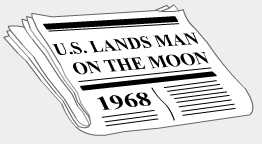
Turning Point: On July 20, 1969, Neil Armstrong, an American astronaut, became the first man on the moon. This event established the United States as the clear winner of the Space Race.
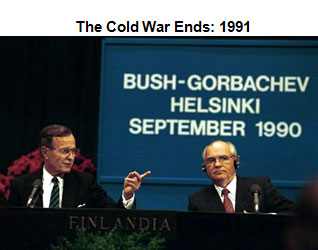
The tensions of the Cold War increased throughout the years. The Soviet Union tightened its grip on the countries associated with its communist reign. Meanwhile, the United States took action to continue its containment policies. This left the rest of the world with residual hostility. By the 1970s, American presidents, starting with Richard Nixon, began to take steps to mend the relationship with the Soviet Union.
![]() Scroll over each image to identify the Cold War presidents.
Scroll over each image to identify the Cold War presidents.
By the 1980s, the Soviet Union began to experience economic problems, and many of the countries under its control began to fight for independence. By 1989, almost every communist state of the Soviet Union had replaced its government with a non-communist version. The Cold War ended in 1991 when the Soviet Union finally crumbled.
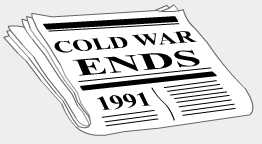
Turning Point: The Cold War era was characterized by the growing tension between the United States and the Soviet Union. The era lasted from 1947 to 1991 and involved a race in space exploration between the two countries, as well as a race to control the most nuclear weapons. The conflict finally ended in 1991 after the Soviet Union crumbled.